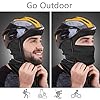Achiou Ski Mask for Men Women, Balaclava Face Cover, Shiesty Mask UV Protector Lightweight for Motorcycle Snowboard
30% OffCQR Men's Polo Shirts, Tactical Short Sleeve Golf Performance Shirts, Lightweight Dry Fit UPF 50+ Pique
$24.98 (as of December 18, 2025 04:42 GMT +00:00 - More infoProduct prices and availability are accurate as of the date/time indicated and are subject to change. Any price and availability information displayed on [relevant Amazon Site(s), as applicable] at the time of purchase will apply to the purchase of this product.)If you are going to hiking and you do not know “how to buy hiking boots“. Are you are searching “how to buy hiking boots“. If your answer is yes then you are in right place. In this article, I will show you “how to buy hiking boots“.
Choosing the proper hiking boots may be a matchmaking method. Your dream hiking boots got to adjust with however and wherever you hike. Before you tie the knot, though, you furthermore may need to make sure they’re an ideal match.
The right try can assist you to glide down the path with a smile on your face, whereas poor-quality boots can have you ever gritting your teeth with each step. The most necessary factor in shopping for boots is to induce a decent match, with a comfortable match at the heel and moving space for your toes ahead.
Factors which depend on how to buy hiking boots
Here we have three main factor which depends on how to buy hiking boots. These three factors are important to understanding while buying hiking boots. These three factors are.
- Type of mens walking boots
- Components of best walking boots
- Fit trekking boots
READ ALSO: Hiking near Fort Collins places to visit|| Hiking care
1. Type of mens walking boots
Here we have three types of mens walking boots. These mens walking boots are used mostly for hiking trails. These three types of mens walking boots are.
- Hiking shoes- good hiking shoes
- Day hiking boots- hiking footwear
- Backpacking boots- best trekking shoes
# Hiking shoes- good hiking shoes
Low-cut models with versatile midsoles are wonderful for day hiking. Some ultralight backpackers could even select trail-running good hiking shoes for long-distance journeys.
# Day hiking boots- hiking footwear
These vary from mid- to high-cut models and are supposed for day hikes or short packing journeys with light-weight hundreds. They typically flex simply and need very little housebreaking time, however, they lack the support and sturdiness of stout carry boots hiking footwear.
# Backpacking boots- best trekking shoes
These area unit designed to hold heavier masses on multiday journeys deep into the backcountry. Most have a high cut that wraps on top of the ankles for wonderful support. sturdy and validating, with stiffer midsoles than lighter footwear, they’re appropriate for on- or off-trail travel.
2. Components of best walking boots
Here we some components of boots material. These components are below.
# Upper
Materials impact a boot’s weight, breathability, sturdiness and water resistance.
- Full-grain animal skin
Full-grain leather offers glorious sturdiness and abrasion resistance and extremely smart water resistance. It’s most typically utilized in carrying boots engineered for extended journeys, serious masses and rugged piece of ground. It’s not as light-weight or breathable as nylon/split-grain animal skin mixtures. Ample associate degreed entering time is required before beginning an extended trip.
- Split-grain animal skin
The split-grain leather is sometimes paired with nylon or nylon mesh to form a light-weight boot that gives glorious breathability. Split-grain animal skin “splits away” the rougher inner a part of the cowhide from the sleek exterior. The profit is the lower value, however, the drawback is a smaller amount resistance to water and abrasion (though several feature waterproof liners).
READ ALSO: Bear mountain NY hiking facts on Appalachian trail
- Nubuck animal skin
Nubuck animal skin is full-grain leather that has been buffed to check suede. it’s terribly sturdy and resists water and abrasion. It’s conjointly fairly versatile, however, it too needs ample time to interrupt it before AN extended hike.
- Synthetics
Polyester, nylon and alleged “synthetic leather” are all usually found in fashionable boots. They’re lighter than animal skin, break in additional quickly, dry quicker and frequently valueless. Downside: they’ll show wear sooner as a result of additional handicraft on the surface of the boot.
- Waterproof membranes
Boots and shoes beaked as “waterproof” feature uppers made with waterproof/breathable membranes (such as Gore-Tex® or eVent®) to stay feet dry in wet conditions. Downside: The reduced breathability created by a membrane (compared to the ventilating mesh used on some nonwaterproof shoes) might encourage feet to sweat on summer days.
- Vegan
Vegan-friendly hiking boots and shoes are created with none animal ingredients or byproducts.
- Insulation
artificial insulation is extra to some climb boots for heat once hiking on snow and glaciers.
# Midsole
The midsole, that provides artifact, buffers feet from shock and for the most part determines a boot’s stiffness. Stiff boots may not sound sort of a sensible issue, except for long hikes on rocky, uneven piece of ground they will mean bigger comfort and stability.
A stiff boot won’t permit your foot to wear out by wrapping around each rock or tree root you step. the foremost common midsole materials square measure EVA (ethylene vinyl acetate) and polyurethane.
# EVA
Maybe a bit cushier, lighter and fewer big-ticket. Midsoles use varied densities of EVA to supply firmer support wherever required (e.g., round the forefoot).READ ALSO: Best hiking in the Midwest places to visit || Hiking care
# Polyurethane
Is usually firmer and a lot of sturdy, therefore it’s sometimes found in extended carry and mount boots.
# Outsole
Rubber is employed on all hiking boot outsoles. Additives like carbon square measure generally additional to packing or climbing boots to spice up hardness. arduous outsoles increase sturdiness, however, will feel slick if go you off the path.
- Lug pattern: Lugs square measure traction-giving bumps on the sole. Deeper, thicker lugs square measure used on packing and climbing boots to boost grip. wide spaced lugs provide smart traction and shed mud additional simply.
- Heel brake: This refers to the clearly outlined heel zone that’s distinct from the animal foot and arch. It reduces your likelihood of slippery throughout steep descents.
# Internal
- Shanks: These 3–5mm thick inserts area unit sandwiched between a boot’s midsole and sole to feature bearing stiffness to the midsole. They vary in length; some cowl the complete length of the midsole, whereas others solely cowl [*fr1].
- Plates: These skinny, semi-flexible inserts area unit positioned between the midsole and therefore the sole, and below the shank (if included). They shield feet from obtaining bruised by roots or uneven rocks.
PRESERVATION BOOTS THAT GO the space
To keep your boots prepared for several a lot of years of path travel, follow the following pointers.
- Frequent waterproofing with wax or siloxane treatments can soften animal skin, not solely be creating your boots easier however additionally stretching them slightly.
- Recondition your boots often and use boot trees.
- Rain and stream crossings facilitate boots adapt to your feet, however, water degrades animal skin and may cause shrinkage.
- On long carry visits, take on waterproofing treatments. you may positively notice what proportion a lot of supply and corroborative your path trashed boots feel once they have been treated.






















